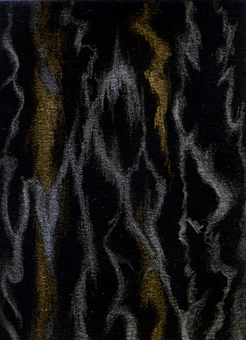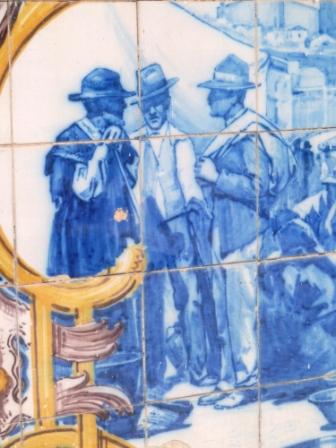One of the attractions of my going to OBRAS Portugal for an artist residency was the marble that is found in the Estremoz area.
I had already seen examples of this lovely, varied but subtle white marble on previous visits to the Alentejo, but it seemed to me that its character lent itself beautifully to silverpoint drawing.
The marble is found in a wide swath in the Alentejo, 27 km by 48 km, running NW-SE, with a depth of nearly 400 metres, but Estremoz is near the centre of the area.Historically this marble has been mined since 370 BC, as was discovered by a tombstone, and the Romans used it for many building projects. The Roman temple in Evora has bases and capitals of marble, while the Roman theatre in Merida, Spain, also has Estremoz marble.
It was soon being widely exported around the Mediterranean and by the Middle Ages, this marble was incorporated in major religious and secular building projects throughout Portugal. By the 15th century, Estremoz marble found its ways to Africa, Brazil and India, in all parts of the Portuguese Empire. The list of important European buildings adorned with this marble ranges from the Jeronimos Monastery in Portugal, to the Escorial Monastery in Spain, to the Louvre, Versailles and the Vatican. Now, the marble is exported worldwide, and Portugal is one of the major producers of marble in the world.
In Estremoz itself and the surrounding areas, marble is an integral, elegant part of all aspects of building. Door and window frames, lintels, floors, stairs, pavements walls – there are touches of marble everywhere, and the cemeteries are a celebration of this stone. Of course, sculptors celebrate this marble as well and there are many artists currently working in it in the Estremoz area. One such sculptor whose work I acquired is Pedro Fazenda. Its colours are mainly white, some with veins and then there are subtle rose shades that can be beautifully translucent, some veined, some less so.
The mines themselves are deep and vertiginous – huge blocks carved out, down and down. Some of the mines have been abandoned as water sources were struck and the quarries filled with water.
Others are still a forest of cranes and heavy equipment disappears down to tinker-toy size far below the surface. Vast mountains of tumbled blocks of waste marble rise drunkenly to the sky in olive groves, and there are piles of sawn-off pieces of marble that beg to be touched and taken. Cores of marble samples lie in abandoned factory areas, while other leased-out mines hum with activity.
There is always the question of how to use the waste marble – one vast pile outside Estremoz was apparently destined to be ground into the chips for the bed of the AVE high speed train link between Madrid and Lisbon. Alas, EU funding dried up for that project and the giant blocks remain intact today.
Needless to say, I could not resist the blocks of marble and am still exulting in its quiet beauty. These are some of the drawings I have done so far – with more silverpoints still to come…




























